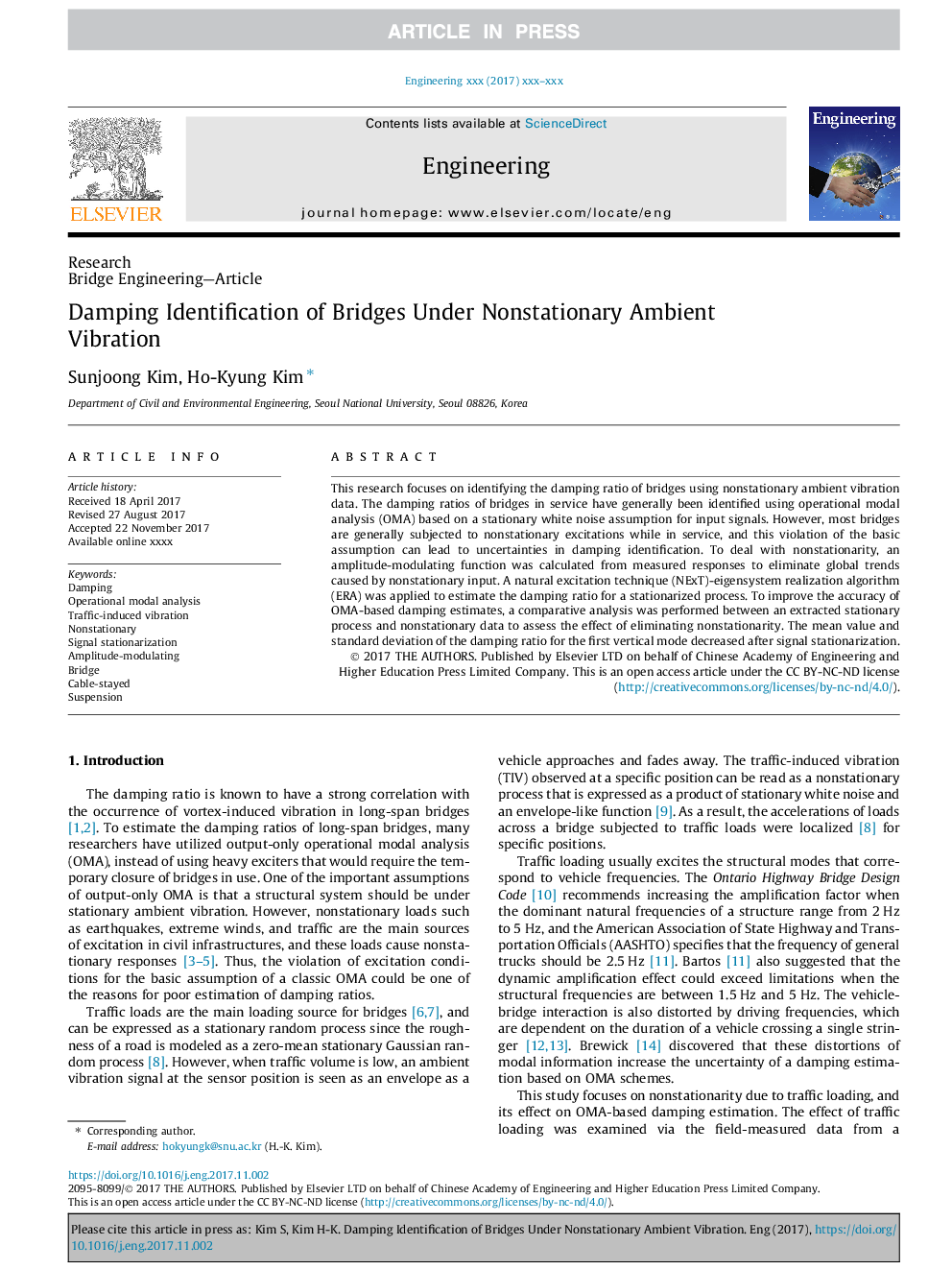| Article ID | Journal | Published Year | Pages | File Type |
|---|---|---|---|---|
| 6893396 | Engineering | 2017 | 6 Pages |
Abstract
This research focuses on identifying the damping ratio of bridges using nonstationary ambient vibration data. The damping ratios of bridges in service have generally been identified using operational modal analysis (OMA) based on a stationary white noise assumption for input signals. However, most bridges are generally subjected to nonstationary excitations while in service, and this violation of the basic assumption can lead to uncertainties in damping identification. To deal with nonstationarity, an amplitude-modulating function was calculated from measured responses to eliminate global trends caused by nonstationary input. A natural excitation technique (NExT)-eigensystem realization algorithm (ERA) was applied to estimate the damping ratio for a stationarized process. To improve the accuracy of OMA-based damping estimates, a comparative analysis was performed between an extracted stationary process and nonstationary data to assess the effect of eliminating nonstationarity. The mean value and standard deviation of the damping ratio for the first vertical mode decreased after signal stationarization.
Keywords
Related Topics
Physical Sciences and Engineering
Computer Science
Computer Science (General)
Authors
Sunjoong Kim, Ho-Kyung Kim,
